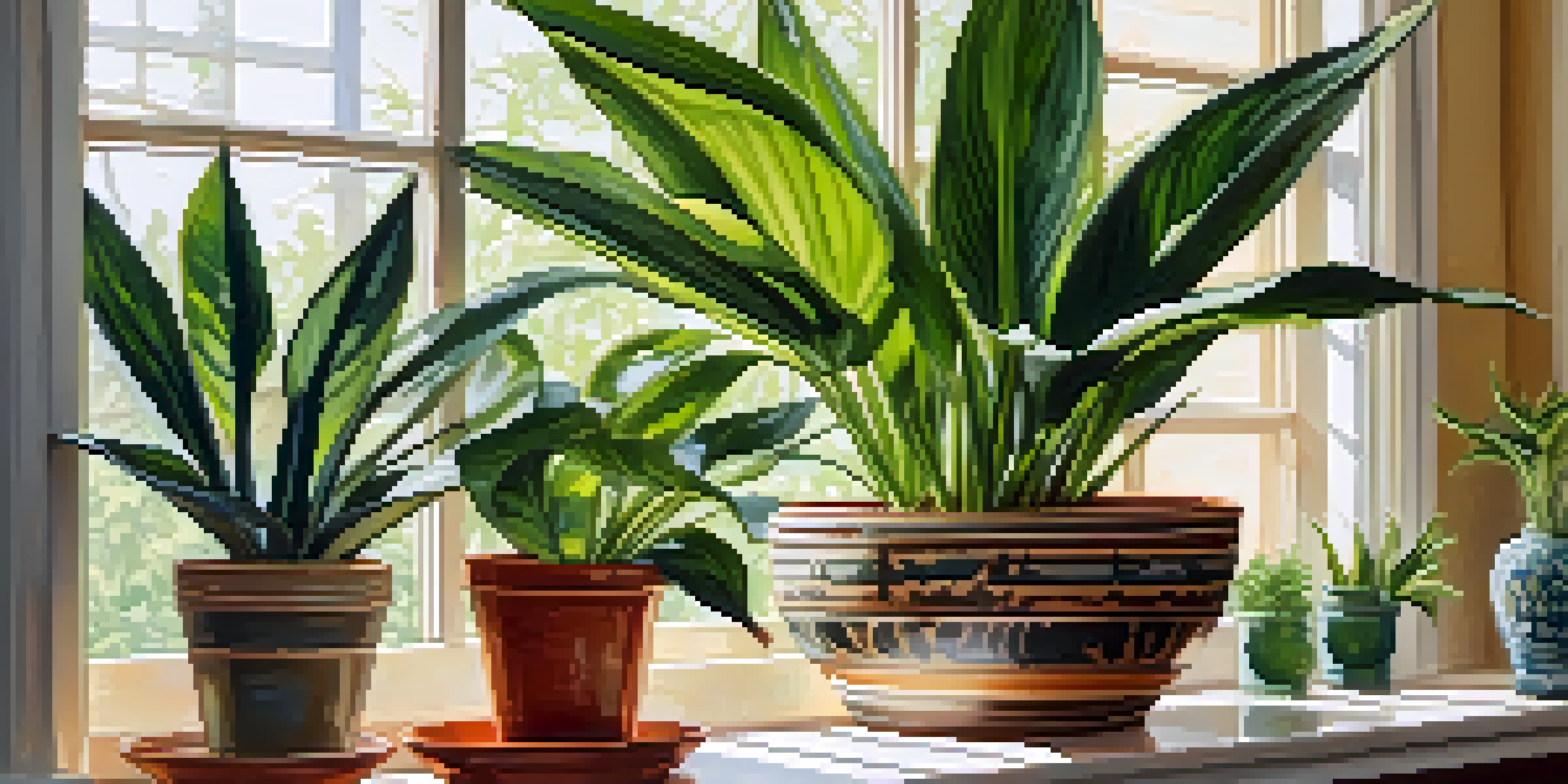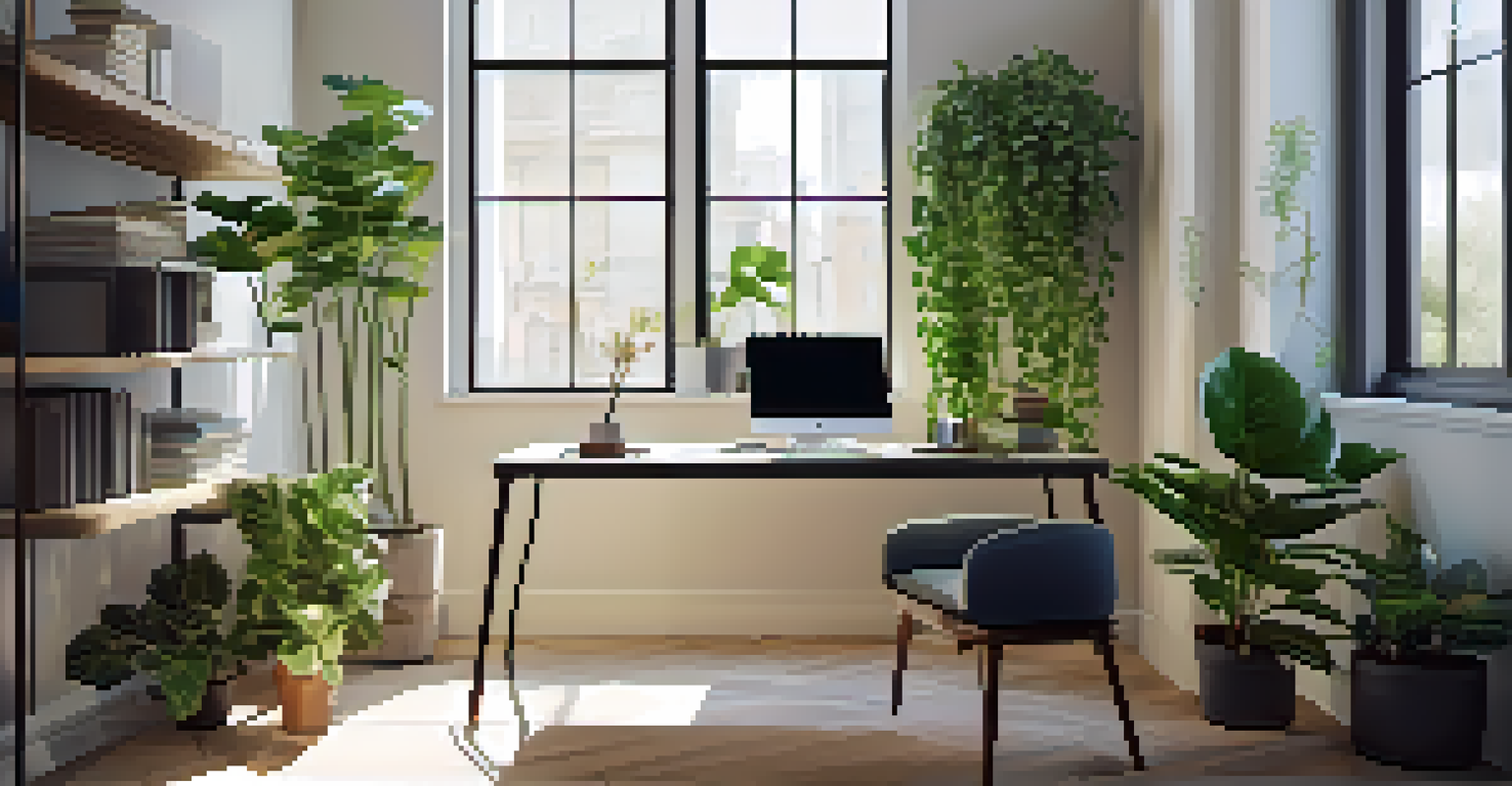Indoor Plants: Natural Solutions for Air Quality Issues

Understanding Air Quality and Its Importance
Air quality significantly affects our health and well-being. Poor indoor air can lead to various health issues, including respiratory problems and fatigue. Factors like pollution, allergens, and even household products contribute to deteriorating air quality in our homes.
The best time to plant a tree was 20 years ago. The second best time is now.
Many people spend up to 90% of their time indoors, making it essential to create a healthy environment. Understanding the sources of indoor air pollution can empower us to take action. By addressing these issues, we can improve not just our air but our overall quality of life.
This is where indoor plants come into play. They are not just decorative; they offer natural solutions that enhance air quality and create a refreshing atmosphere. Let's explore how these green companions can help us breathe easier.
How Indoor Plants Improve Air Quality
Indoor plants contribute to air quality improvement through a process called phytoremediation. They absorb pollutants like formaldehyde and benzene, effectively filtering the air we breathe. Moreover, plants release oxygen and increase humidity, which can further enhance our indoor environment.

For instance, the popular spider plant is known for its air-purifying abilities and is incredibly easy to care for. It can thrive in various light conditions while filtering out contaminants from the air. This makes it an excellent choice for both beginners and seasoned plant enthusiasts.
Indoor Plants Boost Air Quality
Indoor plants naturally filter pollutants and enhance air quality, contributing to a healthier living environment.
In essence, adding a few indoor plants to your space can lead to cleaner, fresher air. They not only contribute to improved air quality but also create a calming and inviting atmosphere in your home.
Best Indoor Plants for Air Quality
When selecting indoor plants for air quality improvement, some varieties stand out. The snake plant, for example, is known for its ability to absorb toxins and convert CO2 into oxygen at night, making it a unique choice for bedrooms. Its striking shape and low maintenance needs make it a popular option.
Plants give us oxygen for the lungs and for the soul.
Another great contender is the peace lily. It’s not only beautiful with its elegant white blooms, but it also excels at filtering harmful chemicals from the air. Peace lilies can thrive in low light, making them an ideal plant for darker corners of your home.
Other notable mentions include pothos, rubber plants, and dracaena. Each of these plants has unique characteristics and air-purifying capabilities, allowing you to choose the best fit for your space and lifestyle.
Creating Your Indoor Plant Oasis
Transforming your home into a plant oasis doesn’t have to be daunting. Start by assessing the amount of light in each room to determine which plants will thrive best. Some plants, like succulents, prefer bright light, while others, like ferns, thrive in shadier spots.
Next, consider the size and scale of plants. Grouping smaller plants can create visual interest, while larger plants can serve as statement pieces. Don’t be afraid to mix different types; just ensure that they have similar care requirements.
Select the Right Indoor Plants
Choosing low-maintenance plants like snake plants and peace lilies can improve air quality while fitting various home aesthetics.
Finally, consider the potting and placement. Use decorative pots that complement your home decor while ensuring proper drainage. This thoughtful placement not only enhances your space but also creates a healthier indoor environment.
Plant Care Basics for Optimal Growth
Caring for indoor plants is easier than you might think! The key is understanding each plant’s specific needs, including light, water, and humidity levels. Overwatering is a common mistake, so make sure to allow the soil to dry out between watering sessions.
Regularly dusting the leaves helps plants absorb light more efficiently, while also keeping them looking their best. Additionally, consider using organic fertilizers to provide essential nutrients, promoting healthy growth without harmful chemicals.
Establishing a consistent care routine can help your plants thrive. Take note of each plant's preferences, and don’t hesitate to adjust your care methods based on their responses to the environment.
Common Myths About Indoor Plants Debunked
There are several myths surrounding indoor plants that can deter people from bringing them into their homes. One prevalent myth is that all indoor plants require a lot of sunlight. In reality, many plants thrive in low-light conditions, making them perfect for apartments and homes with limited natural light.
Another misconception is that indoor plants are high-maintenance. While some may require more attention, many varieties are quite forgiving and can survive with minimal care. Starting with hardy plants can help build your confidence as a plant parent.
Plants Enhance Well-Being
Incorporating indoor plants not only purifies the air but also promotes mental well-being, reducing stress and boosting creativity.
Lastly, people often believe that indoor plants can’t purify the air significantly. However, studies, including NASA’s Clean Air Study, have shown that certain indoor plants can effectively reduce indoor pollutants, proving their value in maintaining good air quality.
The Psychological Benefits of Indoor Plants
Beyond improving air quality, indoor plants offer psychological benefits that can enhance our well-being. Studies show that having plants in our environment can reduce stress and increase feelings of calmness. The act of caring for plants can also promote mindfulness, helping us connect with nature even indoors.
Additionally, indoor greenery can boost creativity and productivity. A simple desk plant can inspire fresh ideas and improve focus, making it a valuable addition to home offices or study spaces. The presence of greenery can stimulate our minds and create a more positive atmosphere.

Incorporating plants into your living space is not just about aesthetics; it’s about creating a sanctuary that nurtures both body and mind. Investing in indoor plants can lead to a happier, healthier home environment.